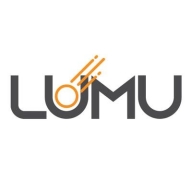

Trend Vision One and Lumu compete in the cybersecurity category. Trend Vision One appears favorable in pricing and support based on user reviews, while Lumu is appreciated for its robust features and perceived value.
Features: Trend Vision One offers comprehensive network security capabilities, effective threat detection, and reliable monitoring tools. Lumu provides advanced threat intelligence, user-friendly management tools, and proactive data leveraging for security insights.
Room for Improvement: Trend Vision One users suggest improvements in reporting functionalities, better user interface, and enhanced real-time analysis. Lumu users recommend better integration with existing systems, streamlined notification features, and expanded customization options.
Ease of Deployment and Customer Service: Trend Vision One provides a straightforward deployment process, but customer support experiences are varied. Lumu offers a seamless deployment experience and is highly rated for its responsive and knowledgeable support team.
Pricing and ROI: Trend Vision One has competitive setup costs with positive ROI feedback highlighting its cost-effectiveness. Lumu, though perceived as pricier, is considered a worthy investment due to its superior detection capabilities and clear ROI.


Lumu Technologies is a cyber-security company that illuminates threats, attacks, and adversaries affecting enterprises worldwide. Using actionable intelligence, Lumu provides a radical way to secure networks by enhancing and augmenting existing defense capabilities established over the past 25 years.
Trend Vision One offers comprehensive protection for endpoints, networks, and email with centralized visibility. It is valued for its attack surface management, real-time threat detection, integrated management, ease of deployment, and user-friendly interface.
Trend Vision One provides a sophisticated security platform combining endpoint, network, and email protection with features like virtual patching and advanced AI capabilities. Its centralized management and integration with platforms like Office 365 and Azure make it an attractive option for organizations needing streamlined workflows and efficient risk management. While it boasts robust integrations and ease of use, enhancements are needed in reporting, tool integration, and reducing false positives. Users call for better support infrastructure, faster response times, and improved threat intelligence capabilities. Despite some complexity, its AI and ML features significantly enhance threat detection and response.
What Features Define Trend Vision One?
What Benefits Should Users Look For?
Trend Vision One is implemented in industries that require endpoint protection, ransomware defense, and incident response, being flexible for both on-premises and cloud environments. It is used to monitor servers, networks, and endpoints, providing features like email protection, behavioral detection, and threat visibility. Organizations benefit from AI and ML, improving their security posture and response capabilities.
We monitor all Network Detection and Response (NDR) reviews to prevent fraudulent reviews and keep review quality high. We do not post reviews by company employees or direct competitors. We validate each review for authenticity via cross-reference with LinkedIn, and personal follow-up with the reviewer when necessary.